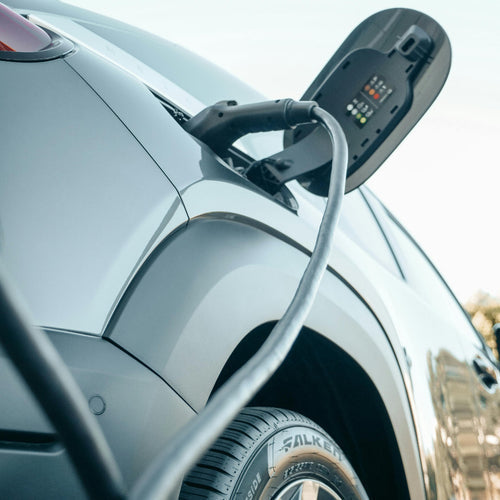As electric vehicles (EVs) become more popular, the need for reliable and efficient charging infrastructure grows. Among the various charging options available, Level 2 charging stands out as one of the most commonly used methods for daily EV charging. If you are new to electric cars or are considering switching to an EV, understanding Level 2 charging is crucial. In this article, we’ll explore what Level 2 charging is, its speed, its costs, and when it’s the best choice for your charging needs.
What is Level 2 Charging?
Level 2 charging refers to a method of charging an electric vehicle using a 240 or 208 volt alternating current (AC) power source. It is significantly faster than Level 1 charging, which uses standard 120-volt household outlets. Level 1 is often used for home charging with a regular wall outlet. Level 2 requires a dedicated charging station, which can be installed at your home or available at public charging stations.
Key Characteristics of Level 2 Charging
- Voltage: 240 volts (compared to 120 volts for Level 1).
- Power: Typically ranges from 3.3 kW to 19.2 kW, depending on the charger and the vehicle’s acceptance rate.
- Connector Type: Most Level 2 chargers use the J1772 connector, which is the standard connector for all non-Tesla electric vehicles in North America. Tesla vehicles can use the same connector with an adapter.
- Charging Speed: Generally faster than Level 1, with typical charging speeds of 10 to 60 miles of range per hour of charging, depending on the power level.

How Fast is a Level 2 EV Charger?
One of the primary reasons EV owners choose Level 2 charging is its speed. Level 2 chargers can typically provide a charging rate of 10 to 60 miles of range per hour, depending on the charger’s power output and the vehicle’s battery capacity.
Charging Speed Breakdown:
- 3.3 kW: This is the lower end of the Level 2 charging spectrum, suitable for smaller batteries or vehicles that don't support faster charging.
- 7.6 kW to 11.5 kW: This is a common range for home charging stations, offering a balance of speed and efficiency for most electric vehicles.
- 19.2 kW: These are high-power chargers that can significantly speed up the charging process, ideal for vehicles that support fast charging rates.
For example, if you have a vehicle with a 60 kWh battery, charging at 7.6 kW would take roughly 8 hours to fully charge from 0% to 100%. On the other hand, a 19.2 kW charger can reduce this time to about 3 hours.
Comparison to Other Charging Levels:
- Level 1 Charging: A 120-volt outlet typically delivers around 2-5 miles of range per hour of charging. This is sufficient for overnight charging in many cases, but it's much slower than Level 2 charging.
- Level 2 Chargers: These chargers are faster and require a 208 or 240-volt outlet. They provide 10 to 60 miles of range per hour, allowing for a full charge in 4 to 8 hours. Level 2 chargers are available at work and public charging stations.
- Level 3 (DC Fast Charging): DC Fast Charging can deliver anywhere from 100 to 250 miles of range in 30 minutes, but it requires specialized charging stations and is not as common as Level 2 chargers.
Charging Time Example:
Tesla Model 3 with a 54 kWh battery and charging at 7.6 kW would take approximately 7 hours to fully charge.
Chevy Bolt EV with a 66 kWh battery would take about 8.5 hours using a 7.6 kW Level 2 charger.
Cost of a Level 2 EV Charger
The cost of installing a Level 2 charging station can vary significantly depending on factors such as location, installation complexity, and the specific brand of the charger. Here’s a breakdown of the potential costs involved:

1. Charger Unit Cost
Basic Level 2 chargers can range from $300 to $800 for the unit alone, though more advanced models with features like Wi-Fi connectivity, app controls, and faster charging capabilities may cost up to $1,200 or more.
Tesla Wall Connector: For Tesla owners, the Tesla Wall Connector costs around $500, with the added benefit of being designed specifically for Tesla vehicles.
2. Installation Costs
Installation costs typically range from $300 to $1,500, depending on the complexity of the installation. This includes the cost of hiring a licensed electrician, any necessary electrical upgrades (such as increasing the amperage of your home’s electrical panel), and labor.
In some cases, homeowners may qualify for rebates or tax incentives, which can help offset the cost of installation. Check with your local utility company for any incentives in your area.
3. Ongoing Electricity Costs
The cost of charging at home depends on local electricity rates, but the average cost of electricity in the U.S. is around $0.16 per kWh.
To give you an idea, fully charging a 60 kWh battery at home would cost about $9.6 (60 kWh x $0.16 per kWh). This is significantly cheaper than the cost of gasoline for a similarly sized car.
4. Public Charging Costs
Public Level 2 charging stations typically charge $0.20 to $0.30 per kWh, though this can vary depending on the location and the charging provider. Some locations may charge by the hour instead of by the kilowatt-hour.
When to Choose Level 2 AC Charging
Level 2 AC charging is an ideal option for many EV owners, but it's important to know when it’s the best choice for your charging needs. Here are some scenarios where Level 2 charging makes the most sense:
1. Daily Charging at Home
If you drive an EV regularly and need to top off your battery every day, Level 2 charging is the best option for home charging. Since it can charge an EV overnight, you can wake up to a fully charged car without needing to visit a public charging station.
2. High Daily Mileage
If your daily commute or travel distance is longer than the average, Level 2 charging can quickly add the range you need. This is especially important for people who need to charge their vehicle daily to cover a significant number of miles.
3. Convenience
Level 2 chargers are convenient for home installations. With the right equipment and setup, you can charge your EV in the comfort of your own garage or driveway without needing to wait in line at public stations.
4. Cost-Effectiveness
When compared to DC fast charging, Level 2 charging is more affordable and available at home. Installing a Level 2 charger may have a higher upfront cost, but it saves money in the long run due to lower per-mile charging costs and convenience.
5. Public Charging Locations

When you are out and about, Level 2 charging stations are commonly available at public locations, such as shopping centers, office buildings, and parking garages. If you need a charge while on the go but don’t have access to DC fast charging, Level 2 chargers are an excellent option for a relatively quick recharge.
Conclusion
Level 2 charging is a crucial option for electric vehicle owners who want a fast, efficient, and affordable way to keep their EVs charged. Whether at home or in public, Level 2 chargers provide a good balance of speed and convenience, enabling most EV owners to fully charge their vehicles overnight or during their daily routines.
While the initial installation costs may seem daunting, the long-term savings, the ability to charge at home, and the convenience of access to the growing network of Level 2 chargers make this a great investment for many EV owners. By understanding how Level 2 charging works, how fast it is, and when it’s the best choice for your needs, you’ll be better prepared to take advantage of the growing EV infrastructure and enjoy the many benefits of electric vehicle ownership.










Leave a comment
This site is protected by hCaptcha and the hCaptcha Privacy Policy and Terms of Service apply.